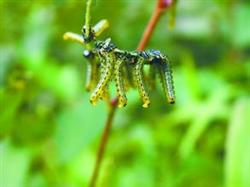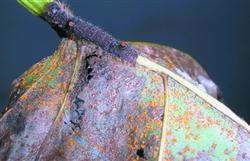Fertilization technique of Poplar

Poplar has the characteristics of fast growth, early maturity, high yield and easy renewal, so it is a fast-growing timber forest species with the largest cultivated area and the highest wood yield in the plain area, so planting poplar has obvious benefits, wide uses, and has good development prospects and potential. Poplar generally reaches maturity in 6 ~ 10 years, and has two growth peaks every year: spring vegetative growth period (May ~ June) and summer vegetative growth period (July ~ August). Poplar likes fertilizer and water, and timely and reasonable topdressing at the growth peak can improve the soil fertility of woodland and promote the growth of poplar. The following is a brief introduction to the problems related to topdressing technology of poplar. Topdressing time after poplar planting survived, topdressing can be applied in the same year, and the effect is better when applied twice in early May and late July. It can be applied less and late in the year of afforestation, and more can be applied after the young forest is closed. The type of fertilization and the amount of fertilizer applied are generally based on available nitrogen fertilizer, with 15 kg of urea and 30 kg of ammonium bicarbonate per 667 square meters (1 mu) every year. Ammonium bicarbonate and binary compound fertilizer are the main topdressing in spring, but the effect of urea fertilizer is poor when the soil temperature is low. The method of topdressing can be applied either in acupoints or in ditches. Each tree opened four holes in different directions, 0.2 meters deep, 0.1 meters wide, 0.4 meters long, 100 grams of urea per plant or 200 grams of ammonium bicarbonate per plant, and the direction of the second topdressing was staggered from that of the first fertilization. Ditch fertilization, ditch depth of 20cm to 30cm. Pay attention to trenching or digging holes at the outer edge of the crown, not too close to the trunk, so as not to burn roots. Topdressing should be combined with watering to ensure the normal and full play of fertilizer efficiency. The symptoms of poplar nutrient deficiency showed nitrogen deficiency in ①. The growth of nitrogen deficient plants was the most inhibited, the leaves were the least, and the single leaf area was the smallest; the leaves were light green to yellowish green; the roots were dark brown, thin and long, but the roots were slightly more than potassium deficiency and phosphorus deficiency. ② is deficient in potassium. The plant is short: the leaf is small, the leaf color is dark green at the beginning, the leaf surface is not spreading and dark brown necrotic spots appear gradually from the base of the leaf, gradually distributed in the whole leaf; the root quantity is less, the root is slender. ③ is deficient in phosphorus. The plant is shorter, the leaf is smaller, the vein and margin of the leaf are slightly purplish red, the leaf surface is densely villous, and the root quantity is less. ④ is magnesium deficient. The plant height, leaf area and leaf number were close to the normal plants; at the initial stage, the leaves were folded and unspreading, and the veins were yellowish green, but in the later stage, green spots appeared near the leaf margin, which quickly changed from yellow to yellowish green necrotic spots, but the upper young leaves were more normal; the quantity was not significantly reduced, and the root system was longer. ⑤ is iron deficient. The height growth was less inhibited, the chlorosis began to appear in the 3rd ~ 4th leaves upward from the base, the green around the veins did not disappear, the chlorosis of the upper young leaves became more serious, and the green around the veins became lighter, but the lower old leaves did not appear chlorosis.
- Prev

Integrated control of poplar leaf-eating pests
Poplar is deeply loved by the people because of its fast-growing, wide growing area and outstanding economic benefits, but with the gradual expansion of poplar planting area, especially the development of pure forest area, the outbreak of poplar leaf-eating pests continues to occur, so the integrated control of poplar leaf-eating pests appears to be very.
- Next

Skin rot of poplar and its control
Poplar skin rot: the symptoms of poplar rot occur on the trunk and branches, showing two types of dry rot and withered branches: dry rot mainly occurs in the trunk, big branches and branch bifurcations. At the initial stage, the disease showed dark brown edematous spots, cortical tissue decayed and softened, and the bark dried and sunken after dehydration, sometimes cracked.
Related
- Fuxing push coffee new agricultural production and marketing class: lack of small-scale processing plants
- Jujube rice field leisure farm deep ploughing Yilan for five years to create a space for organic food and play
- Nongyu Farm-A trial of organic papaya for brave women with advanced technology
- Four points for attention in the prevention and control of diseases and insect pests of edible fungi
- How to add nutrient solution to Edible Fungi
- Is there any good way to control edible fungus mites?
- Open Inoculation Technology of Edible Fungi
- Is there any clever way to use fertilizer for edible fungus in winter?
- What agents are used to kill the pathogens of edible fungi in the mushroom shed?
- Rapid drying of Edible Fungi

